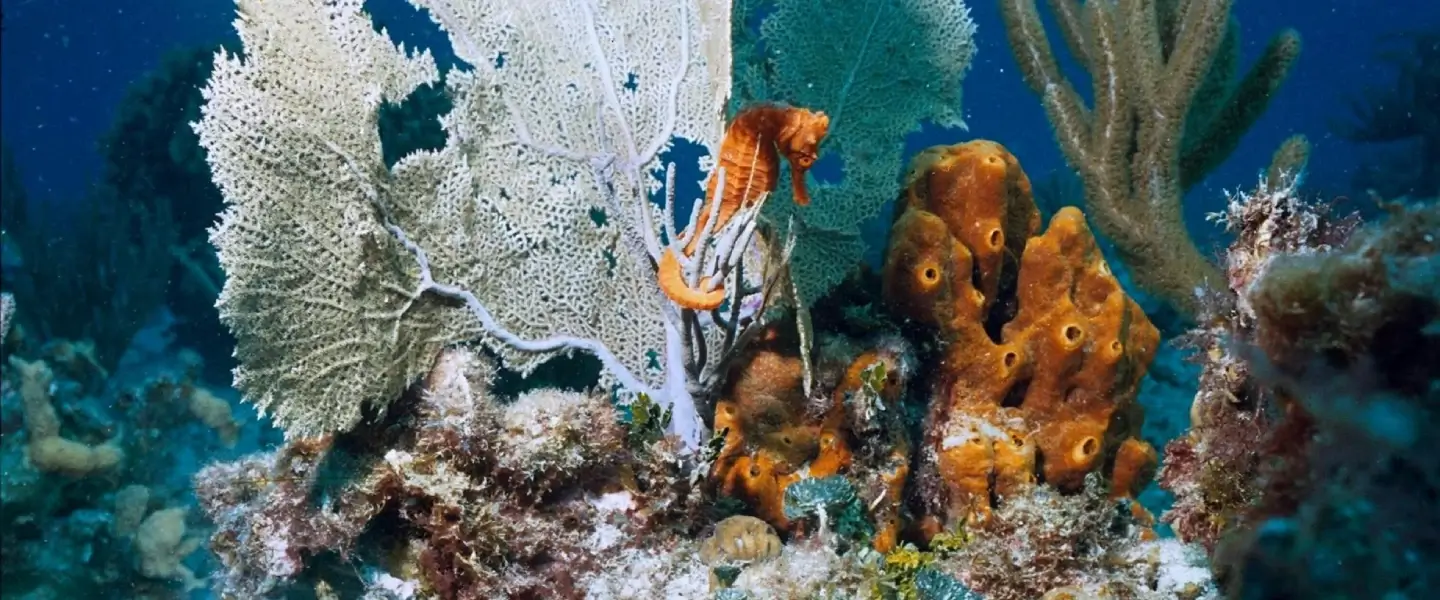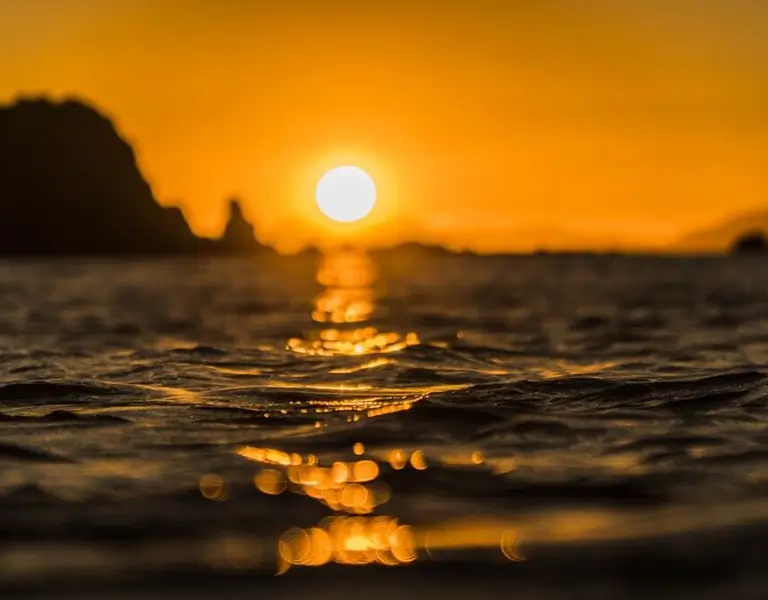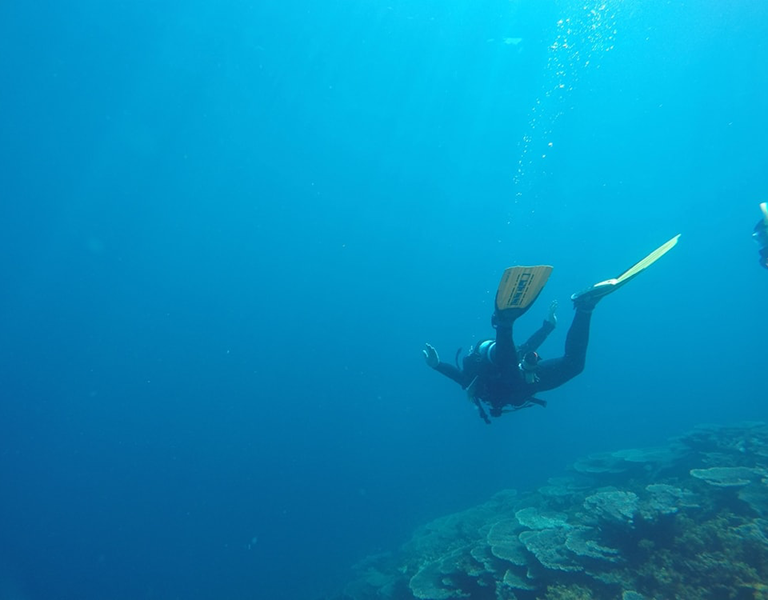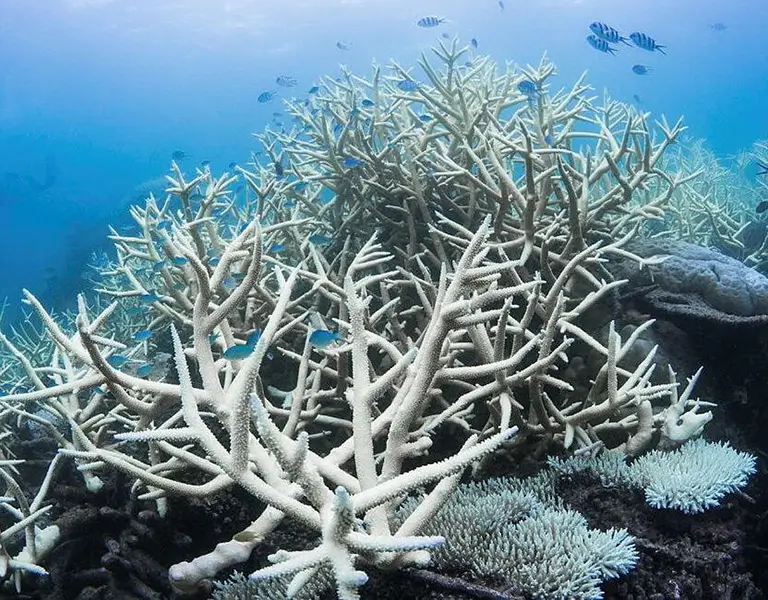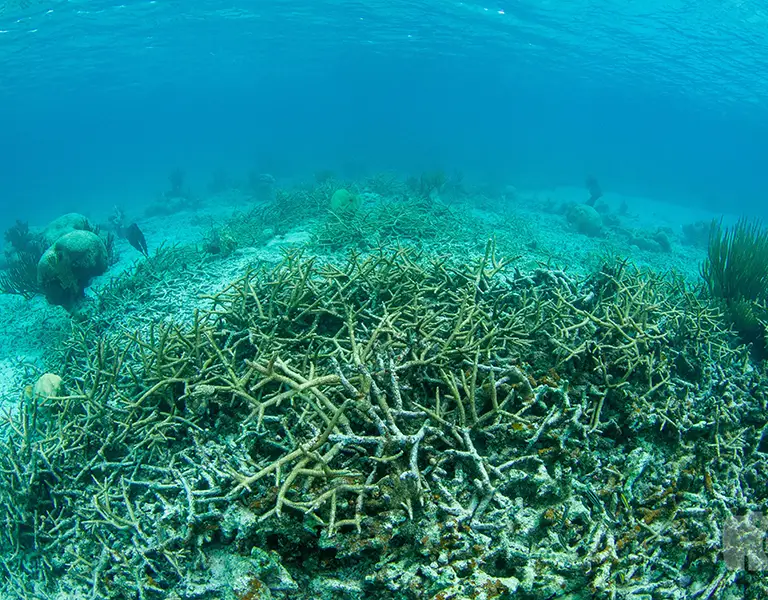Coral reefs represent some of the most diverse ecosystems on our planet, supporting approximately 25% of all marine species while covering less than 1% of the ocean floor1. These underwater wonders are often called the “rainforests of the sea” for their incredible biodiversity and complex ecological relationships. While coral reef animals often capture our imagination, the plant life within these ecosystems is equally vital, providing essential habitat, food, and oxygen that sustains entire marine communities.
Key Takeaways
- Coral reef plants, particularly marine algae, are primary producers that form the foundation of coral reef food chains and contribute significantly to reef structure.
- Red, green, and brown algae each play unique ecological roles in reef ecosystems, from providing food for herbivores to cementing coral skeletons together.
- Seagrass meadows near coral reefs create crucial nursery habitats for juvenile reef fishes and help maintain water quality through filtration.
- Climate change, ocean acidification, and coastal development threaten coral reef plants and the symbiotic relationships they form with coral polyps.
- Protecting and restoring coral reef plant communities is essential for maintaining reef biodiversity and ensuring these ecosystems can withstand environmental stressors.
Understanding Coral Reef Plants
The Plant Life of Coral Reef Ecosystems
Coral reef ecosystems support a remarkable diversity of plant life, though the term “plant” requires clarification in the marine context. Unlike terrestrial ecosystems where land plants dominate, coral reefs feature primarily marine algae and specialized flowering plants. These photosynthetic organisms harness sunlight to produce organic matter, serving as the foundation of reef food chains.
The shallow, clear waters that coral reefs require allow ample sunlight to penetrate, creating ideal conditions for photosynthesis. This abundance of light energy, combined with the structural complexity of coral formations, creates numerous microhabitats where different marine plants thrive across various reef zones.
Are Corals Plants?
A common misconception is that corals themselves are plants. Unlike plants, corals are actually invertebrate animals related to jellyfish and coral polyps animals. Most corals grow in colonies of thousands of tiny individual animals called polyps that secrete calcium carbonate skeletons, forming the reef structure over time.
However, reef-building corals do have a fascinating relationship with plants – they host Microalgae called zooxanthellae within their tissues. This symbiotic relationship benefits both organisms: the coral provides protection and compounds needed for photosynthesis, while the algae supply the coral with oxygen and food. This plant-animal partnership is the foundation of coral reef systems worldwide.
Types of Coral Reef Plants
Marine Algae: The Foundation of Reef Ecosystems
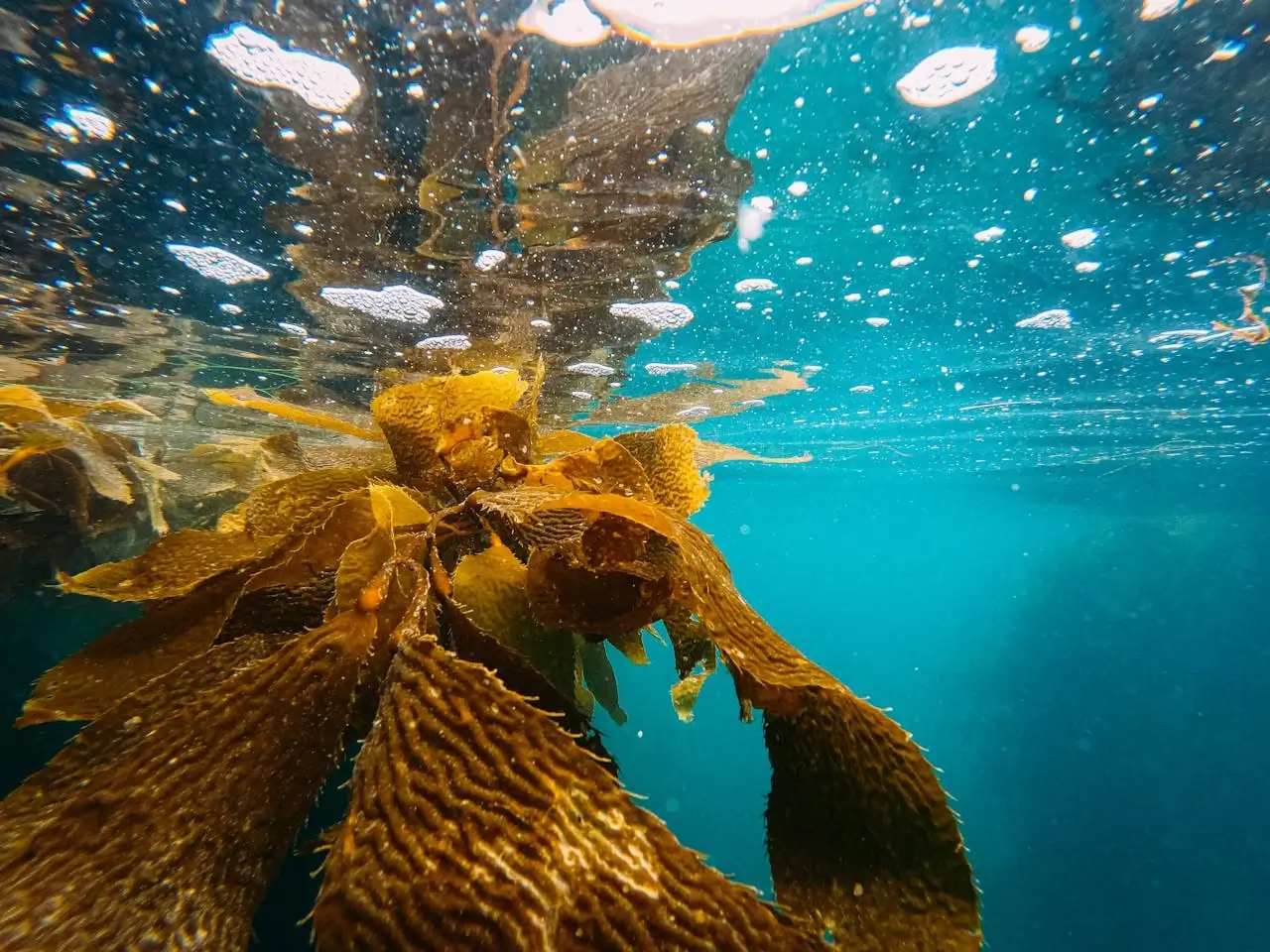
Marine algae dominate the plant life on coral reefs, existing in incredible diversity from microscopic single-celled organisms to large, complex forms. These ancient photosynthetic organisms lack the true roots, stems, and leaves of land plants, but they perform similar ecological functions as primary producers, habitat creators, and important components of the reef structure itself.
Algae grow on virtually every available surface on the reef, from bare rock to dead calcium carbonate structures. Some even grow directly on living corals or within the tissues of other marine organisms. This ubiquity reflects their fundamental importance to reef ecology.
Green Algae: Vibrant Reef Inhabitants
Green algae represent one of the most visible groups of coral reef plants. With approximately 1,500 marine species2, they display remarkable diversity in form and function. Green algae contain chlorophyll a and b (similar to land plants) giving them their characteristic color, and they store energy as starch, another trait shared with terrestrial plants.
Common green algae in reef environments include sea lettuce (Ulva spp.), which forms thin, sheet-like structures, and Halimeda, which produces calcified segments that contribute significantly to reef sediments. One of the most recognized forms is Caulerpa, known as “sea grapes” due to its grape-like vesicles. This diverse group provides food for many coral reef herbivores, including surgeonfish, parrotfish, and sea urchins.
Green algae common on healthy reefs often indicate good water quality and ecosystem balance, though certain species can become problematic when environmental conditions change.
Red Algae: Crucial Reef Builders
Red algae comprise the largest group of marine algae, with over 6,000 species found worldwide3. Their distinctive red color comes from the photosynthetic pigment phycoerythrin, which allows them to photosynthesize at greater depths than other algae by absorbing blue light that penetrates deeper into the water.
On coral reefs, coralline algae—a specialized group of red algae—play a crucial role in reef development. These algae incorporate calcium carbonate into their cell walls, creating hard structures that help cement calcium carbonate structures together, strengthening the reef against wave action. Some species form pink to purple crusts over rocky reef surfaces, while others grow as branching structures.
Red algae also include economically important species used for agar and carrageenan production. Within reef ecosystems, they provide habitat for small invertebrates and serve as food for specialized grazers.
Brown Algae: Underwater Forests
Brown algae include some of the largest and most complex algae on coral reefs. While the massive kelp forests are found in cooler waters beyond tropical reef environments, smaller brown algae species are common reef inhabitants. These algae contain the pigment fucoxanthin, which gives them their characteristic brown to olive-green color4.
In reef ecosystems, brown algae like Sargassum and Turbinaria create forest-like structures that provide crucial habitat for fish and invertebrates. Sargassum can grow attached to the reef or float at the ocean surface, creating mobile habitats that support specialized communities.
Brown algae serve as important food sources for herbivorous reef fish and sea urchins. Some species produce chemical defenses that deter grazers, influencing reef food webs and species interactions.
Turf Algae: The Living Carpet
Turf algae form a low-growing, carpet-like assemblage of multiple algal species that blanket reef surfaces. These mixed communities typically stand less than 1 cm tall and include various red, green, and brown algae5. Though less noticeable than larger algae, turf communities often dominate in terms of reef coverage and ecological importance.
Highly productive and fast-growing, turf algae represent a major food source for herbivorous reef fishes. Parrotfish, surgeonfish, and rabbitfish spend much of their day grazing these algal carpets, transferring energy up the food chain. The constant growth and grazing of turf algae represent one of the most important energy pathways in reef ecosystems.
Microscopic Algae: Invisible Yet Essential
Beyond the visible algae that cover reef surfaces, microalgae play fundamental roles in reef ecology. These include phytoplankton—drifting photosynthetic organisms that contribute to primary production in the water column—and the zooxanthellae that live symbiotically within coral tissues.
Phytoplankton form the base of pelagic food webs and provide food for filter-feeding invertebrates and planktivorous fishes on the reef. Meanwhile, zooxanthellae supply their coral hosts with up to 90% of their energy needs through photosynthesis6. This symbiotic relationship is essential for coral survival and reef building.
Seagrass: Meadows Beyond the Reef
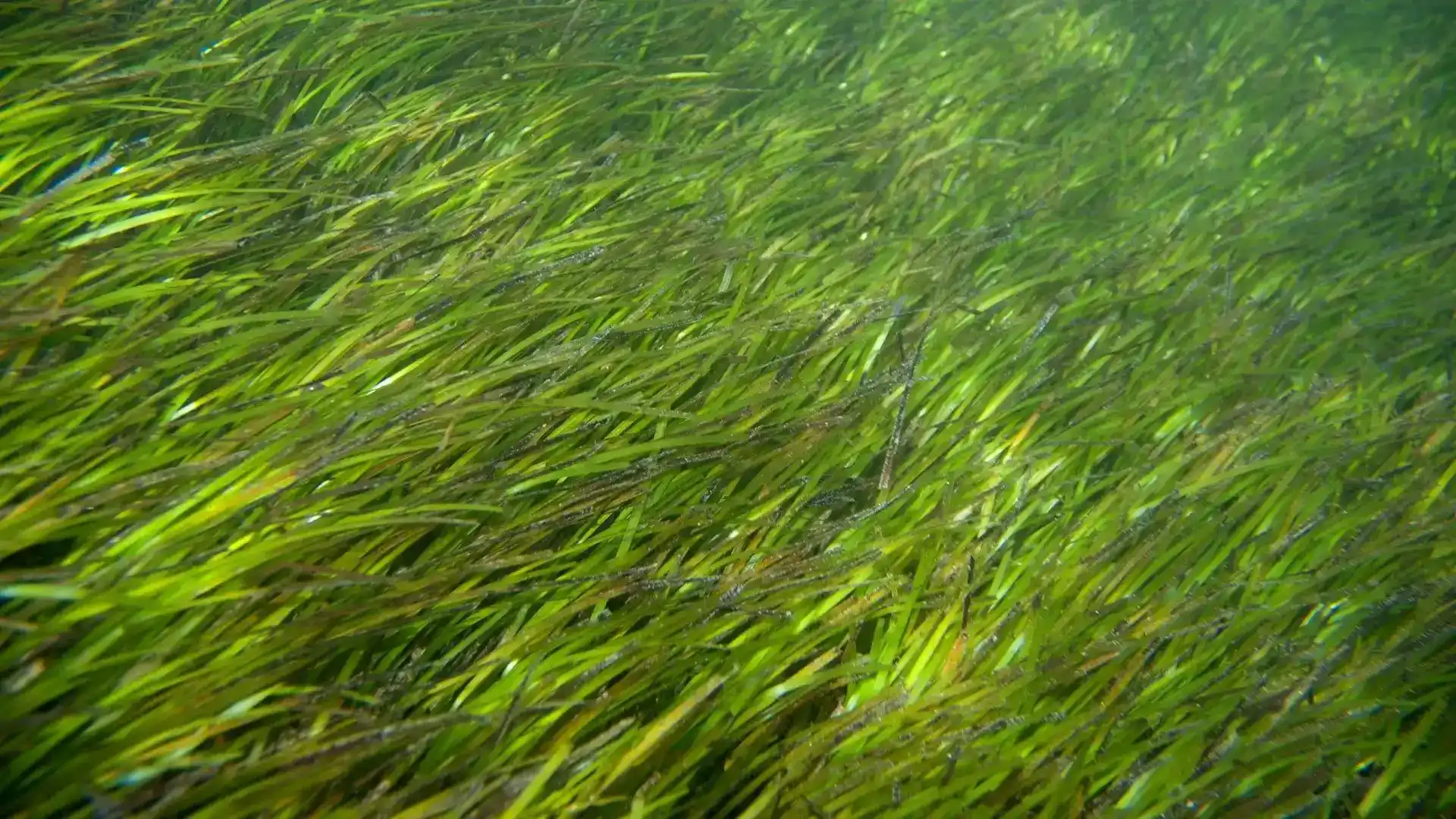
While not growing directly on coral formations, seagrass meadows often occur adjacent to coral reefs, creating interconnected ecosystems that support reef health7. Unlike algae, seagrasses are true flowering plants (angiosperms) that evolved from land plants, returning to the marine environment millions of years ago.
Seagrasses have specialized salt filtering roots and can reproduce both sexually (through flowers and seeds) and asexually (through rhizome extension). They form extensive underwater meadows in sandy areas near reefs, particularly in back reef and lagoon environments. Common genera include Thalassia, Halodule, and Syringodium.
These marine plants provide critical nursery habitat for juvenile reef fishes, many of which begin life in seagrass beds before migrating to the reef as adults. Seagrasses also stabilize sediments and improve water clarity, benefiting neighboring coral reef systems.
The Ecological Roles of Coral Reef Plants
Primary Production: Powering the Reef Food Chain
Coral reef plants are essential primary producers, converting sunlight and carbon dioxide into organic compounds that fuel the entire reef food web8. This process of photosynthesis introduces new energy into the ecosystem, supporting the diverse community of consumers from tiny invertebrates to large predatory fish.
Algae and seagrasses in reef ecosystems can be incredibly productive, sometimes matching or exceeding the productivity of tropical rainforests in terms of carbon fixation per unit area. This high productivity is remarkable given that tropical oceans are typically low in nutrients.
Primary production by reef plants occurs at multiple levels: within coral tissues (via zooxanthellae), on reef surfaces (via benthic algae), and in the water column (via phytoplankton). This diversified production system creates resilience in the food web.
Habitat Creation: Shelter in a Dynamic Environment
Beyond their role as food producers, coral reef plants create physical habitat that supports marine biodiversity. Larger algae species and seagrasses form forest-like structures where small fish and invertebrates find refuge from predators. These plant-created habitats are particularly important for juvenile organisms, serving as nursery areas that support reef population replenishment.
Even smaller algal forms contribute to habitat complexity. Turf algae provide microhabitats for tiny invertebrates, while coralline algae create textured surfaces that are ideal settlement sites for coral larvae. This habitat provisioning supports biodiversity at multiple scales, from microscopic organisms to larger reef inhabitants.
Reef Construction: Building the Foundation
Some coral reef plants directly contribute to reef construction through calcification—the process of incorporating calcium carbonate into their structures. Coralline algae are particularly important in this regard, as they deposit calcium carbonate similar to corals, strengthening the reef framework and cementing loose components together.
Certain green algae, notably Halimeda, also produce calcium carbonate segments that become important components of reef sediment when the algae die. Over time, these algal contributions can form substantial deposits, sometimes creating entire islands or expanding reef flats.
Symbiotic Relationships: Partnerships for Survival
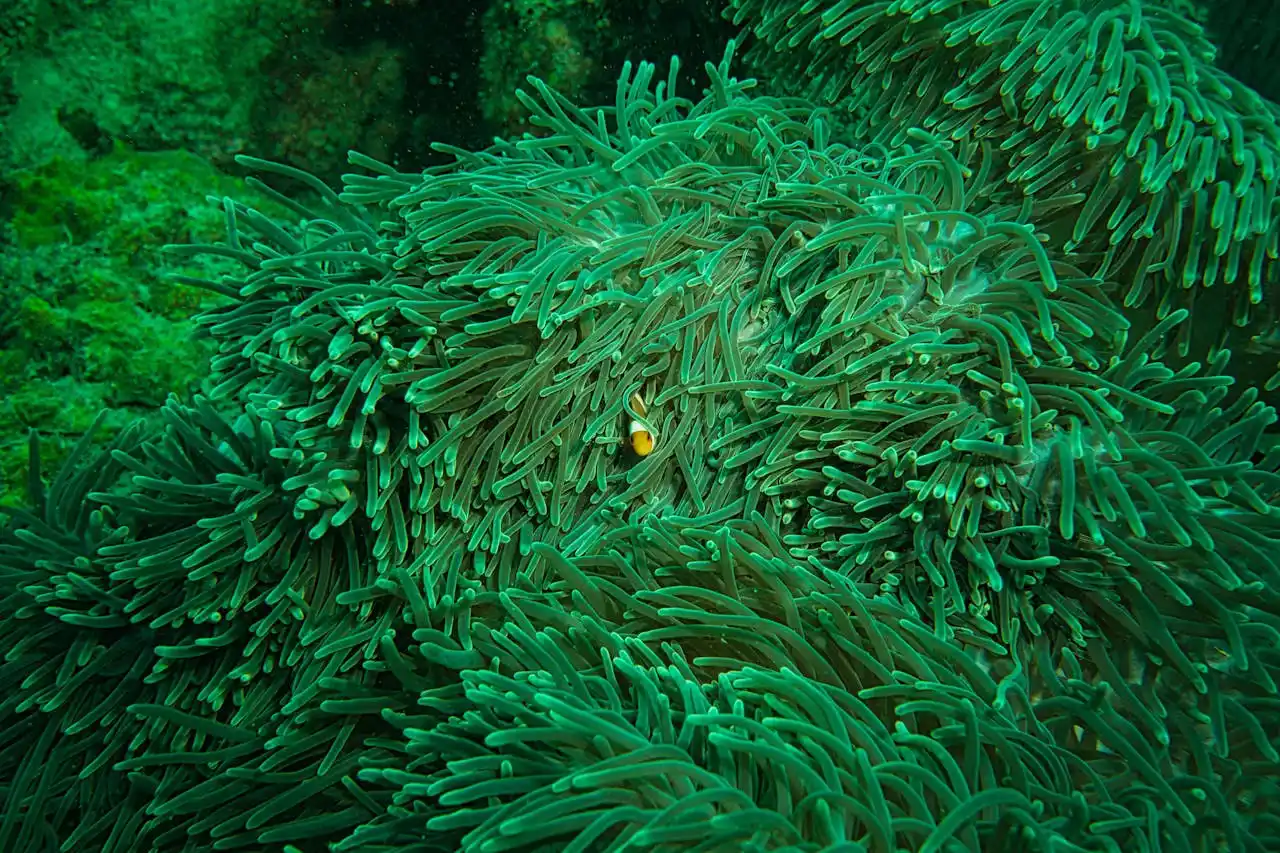
One of the most remarkable aspects of coral reef ecology is the symbiotic relationship between corals and microalgae. This partnership allows both organisms to thrive in nutrient-poor waters by efficiently recycling limited resources. The coral host provides protection and compounds needed for photosynthesis, while the algae supply oxygen and organic compounds.
This relationship is so successful that it forms the foundation of reef ecosystems worldwide. However, it’s also vulnerable to environmental stressors, particularly elevated water temperatures, which can cause the coral to expel its algal partners, leading to coral bleaching.
Beyond coral-algal symbiosis, reef plants form numerous other mutually beneficial relationships with animals. Certain damselfish species “farm” algal gardens, defending territories where they cultivate preferred algal species while removing less desirable ones.
Water Quality Improvement: Natural Filtration Systems
Coral reef plants play crucial roles in maintaining water quality around reef systems. Seagrasses trap sediments that might otherwise smother corals, while their extensive root systems stabilize the seafloor. Both seagrasses and algae absorb nutrients from the water column, helping prevent eutrophication that could lead to harmful algal blooms.
This filtering function is particularly important in areas affected by coastal development and agricultural runoff. By intercepting nutrients and sediments before they reach the reef, plant communities in adjacent ecosystems like seagrass beds and mangrove forests serve as natural buffers that protect coral health.
Coral Reef Zones and Their Plant Communities
Reef Flat: Thriving in Shallow Waters
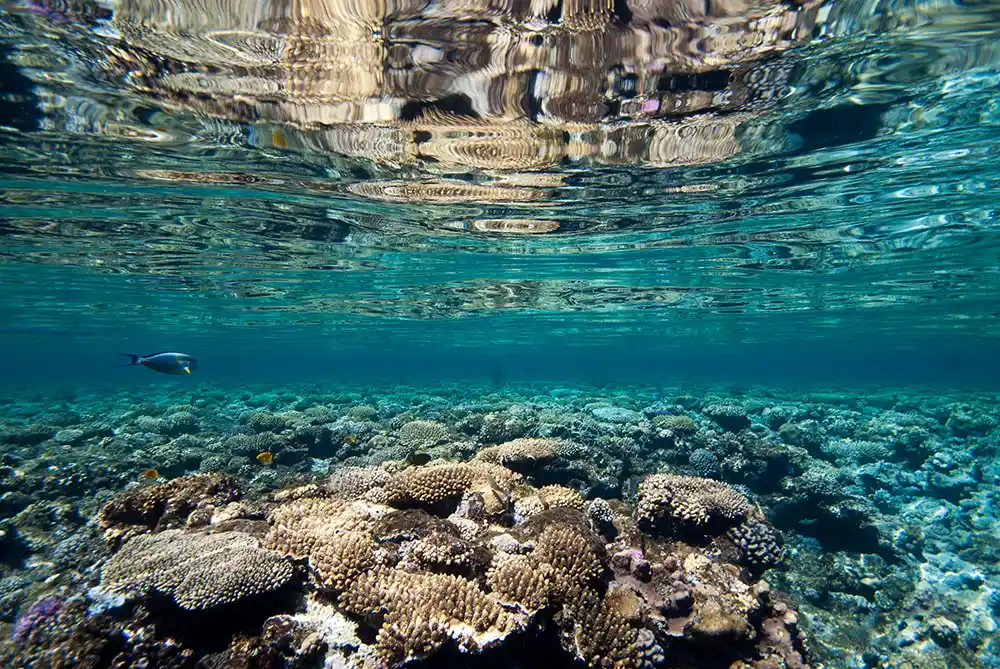
The reef flat represents one of the shallowest portions of a coral reef system, often exposed during low tides. These areas experience high light intensity, significant water movement, and temperature fluctuations—conditions that favor certain types of hardy reef plants.
On the shallowest reef flats, algal communities are dominated by stress-tolerant species that can withstand periodic exposure to air and intense sunlight. Coralline algae often form crusts over rocky surfaces, while turfing algae create low-profile mats. Green algae like Halimeda and Caulerpa commonly occur in slightly deeper portions of the reef flat.
Reef Crest: Plants on the Edge
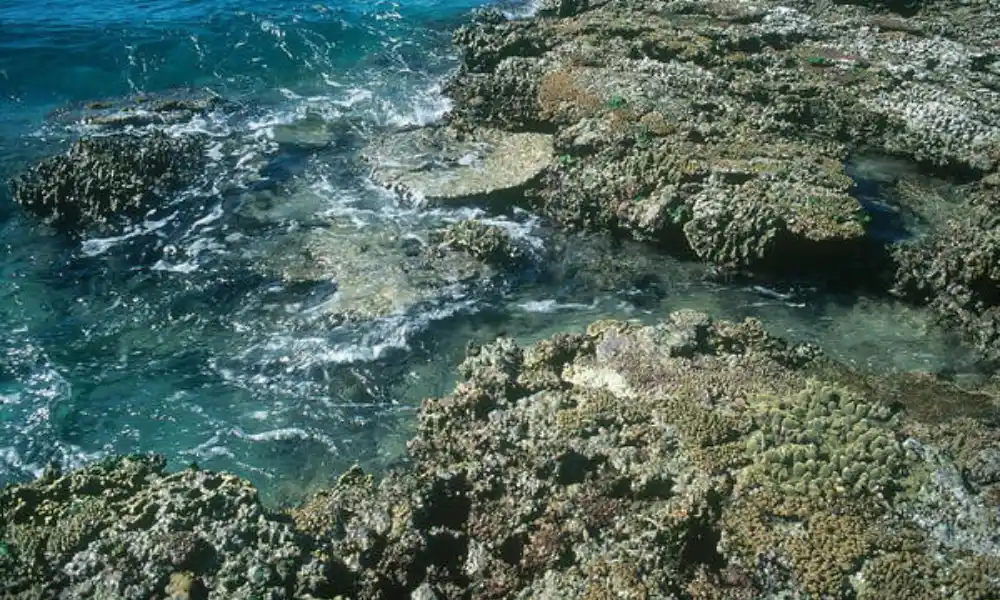
The reef crest marks the boundary between the reef flat and the fore reef, often experiencing the most intense wave action. This high-energy environment selects for algae with strong attachment mechanisms and flexible forms that can bend without breaking under wave force.
Red coralline algae are particularly abundant on reef crests, where they form hard crusts that help cement the reef structure together. These algae are critical in maintaining reef integrity in this wave-impacted zone.
Fore Reef: Descending into Deeper Waters
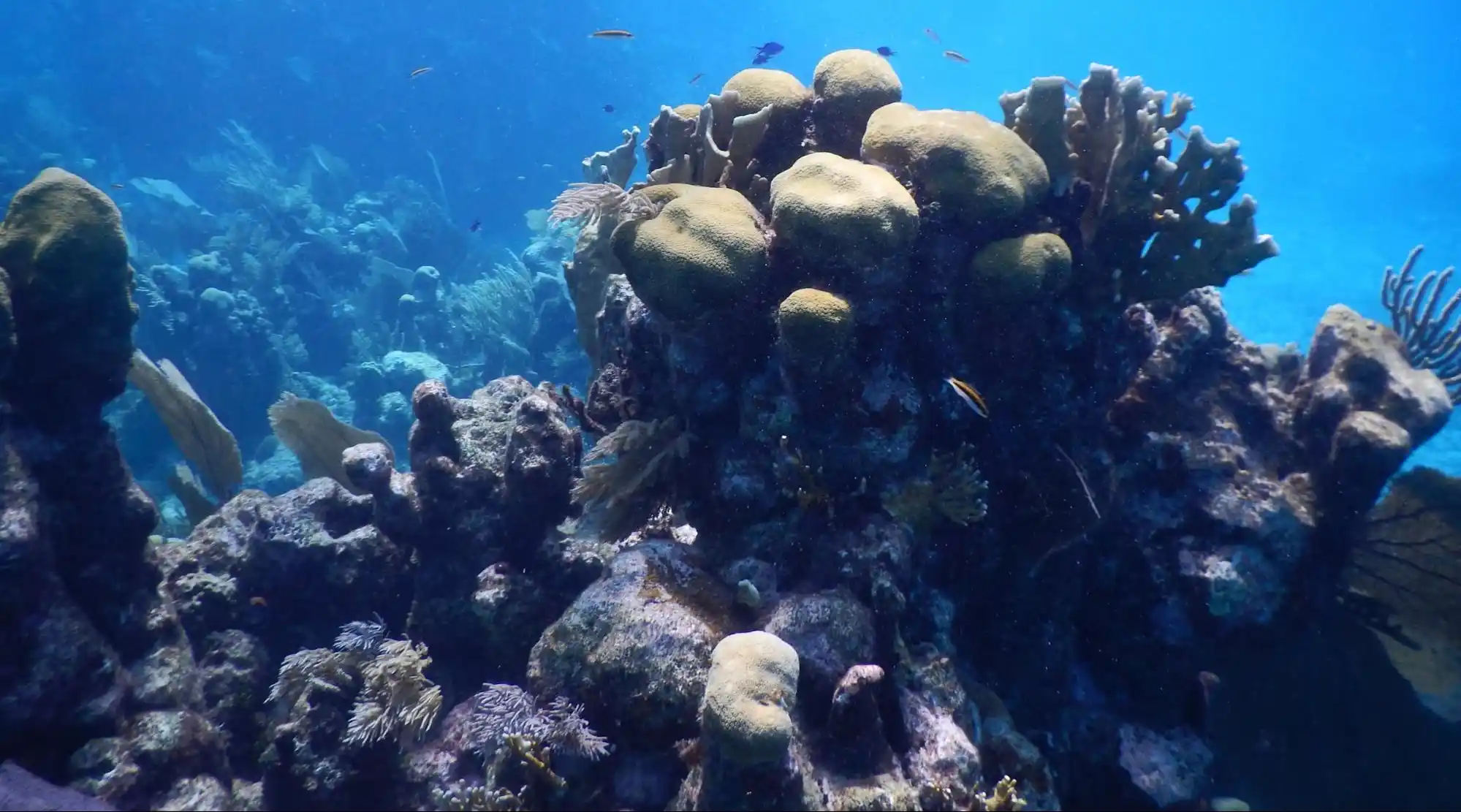
The fore reef extends from the reef crest down the outer slope of the reef, gradually transitioning to deeper waters. This zone features a light gradient that strongly influences plant community composition, with different species adapted to specific depth ranges based on their photosynthetic pigments.
In upper fore reef areas, diverse assemblages of green, red, and brown algae create complex three-dimensional habitats. As depth increases, red algae become increasingly dominant because their phycoerythrin pigments can utilize the blue light that penetrates deeper waters.
Back Reef: Protected Plant Communities
The back reef zone lies between the reef crest and the shore or lagoon, often characterized by calmer waters and varied substrates including coral patches, sand, and rubble9. These protected conditions allow for diverse plant communities to develop, including more delicate forms that would be damaged in higher-energy environments.
Seagrass beds commonly occur in sandy back reef areas, creating extensive meadows that support distinct communities of fish and invertebrates. Various green algae thrive here, including Caulerpa, Halimeda, and Penicillus.
Threats to Coral Reef Plants
Climate Change: Warming Waters and Acidification
Climate change represents one of the most significant threats to coral reef plants and the ecosystems they support. Rising ocean temperatures disrupt the delicate symbiotic relationship between corals and their microalgae partners, leading to coral whitening events that can cause widespread mortality if prolonged.
Ocean acidification—caused by increasing atmospheric carbon dioxide dissolving into seawater—poses additional challenges. As oceans become more acidic, calcifying organisms like coralline algae and Halimeda face difficulties building and maintaining their calcium carbonate structures.
Climate-related changes in storm patterns and sea levels further impact reef plant communities through altered wave regimes, light availability, and sedimentation patterns. These combined stressors challenge the resilience of reef plants.
Coastal Development: Human Impacts on Reef Systems
Coastal development directly threatens coral reef plants through physical destruction, increased sedimentation, and pollution runoff. Construction activities near shorelines often generate sediments that can smother reef plants, blocking light needed for photosynthesis and preventing successful recruitment of new individuals.
Nutrient pollution from agricultural runoff, sewage discharge, and urban landscapes can dramatically alter reef plant communities. Excess nutrients favor fast-growing algae that can outcompete corals and more specialized algal species, potentially leading to phase shifts where algal dominance replaces coral dominance.
Overfishing: Disrupting Ecological Balance
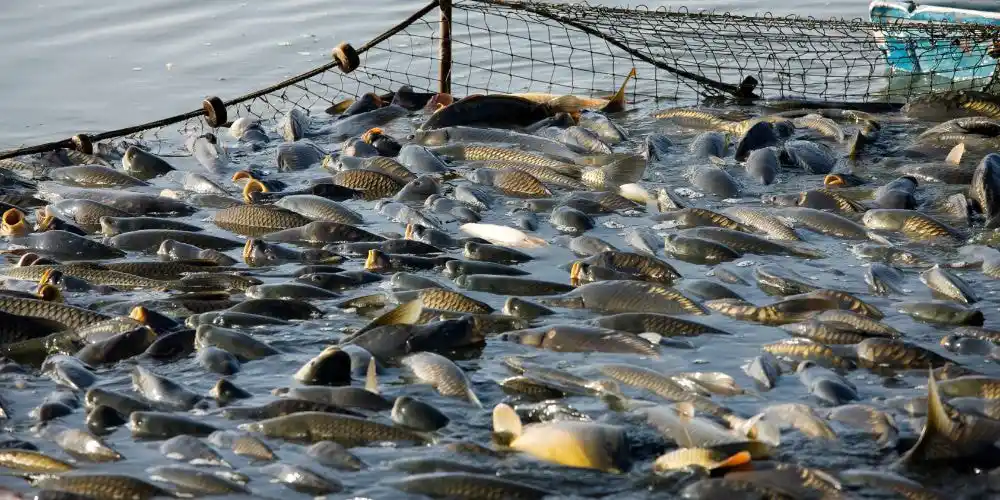
Overfishing might not seem directly connected to reef plants, but the removal of herbivorous fish species has profound impacts on algal communities. When populations of grazing fish like parrotfish and surgeonfish are depleted, algal growth can proceed unchecked, potentially smothering corals and other sessile organisms.
This disruption of the balanced relationship between algae and their grazers can trigger ecosystem shifts. Without sufficient herbivory, fast-growing algae can rapidly colonize dead calcium carbonate structures following disturbances, preventing coral recovery.
Invasive Species: New Threats to Natural Balance
Invasive marine plants, particularly certain algae species, pose serious threats to native reef plant communities. Species introduced through aquarium releases, ship ballast water, or other human activities can outcompete native species, reduce biodiversity, and alter ecosystem function when they lack natural predators or control mechanisms.
Notable examples include Caulerpa taxifolia, which has invaded Mediterranean and California waters with devastating effects, and Kappaphycus alvarezii, introduced for aquaculture in Hawaii that has overgrown and killed corals.
Conservation and Restoration of Coral Reef Plants
Marine Protected Areas: Safeguarding Reef Ecosystems
Marine protected areas (MPAs) represent one of the most effective tools for conserving coral reef plants and the ecosystems they support. By limiting or prohibiting extractive activities like fishing, MPAs help maintain the ecological balance between reef plants and their consumers, preventing the overgrowth of opportunistic algae.
Well-designed MPA networks incorporate diverse reef habitats, including different zones with their characteristic plant communities. This comprehensive protection approach helps maintain ecological connectivity and enhances ecosystem resilience.
Reducing Land-Based Pollution: Protecting Water Quality
Addressing land-based sources of pollution remains critical for maintaining healthy reef plant communities. Improved watershed management practices help reduce sediment runoff that can smother reef plants and block essential light. Similarly, better management of agricultural fertilizers, sewage treatment, and urban stormwater decreases nutrient pollution.
Restoring coastal ecosystems like mangrove forests creates natural buffers that filter pollutants before they reach reef systems. These ecosystems trap sediments, absorb excess nutrients, and process various contaminants, ultimately improving water quality conditions for reef plants.
Climate Action: Addressing the Root Cause
While local conservation measures remain essential, addressing climate change through global reductions in greenhouse gas emissions represents the most fundamental action needed to protect coral reef plants and their ecosystems. Limiting ocean warming and acidification is crucial for preserving the environmental conditions that allow reef plants to thrive.
Research into assisted evolution and selective breeding of more temperature-tolerant strains of zooxanthellae and other reef plants may offer additional tools for climate adaptation. While such interventions raise complex considerations, they reflect the urgency of developing multiple approaches to address climate threats.
Sustainable Tourism: Balancing Access and Protection
Coral reef tourism can either threaten or support reef plant conservation, depending on how it’s managed. Poorly regulated tourism activities can directly damage reef plants through trampling, boat anchoring, and irresponsible snorkeling or diving practices. However, well-managed eco-tourism creates economic incentives for reef conservation while raising awareness.
Sustainable tourism practices include using mooring buoys instead of anchors, establishing carrying capacities for popular sites to prevent overuse, and educating visitors about responsible reef interaction. Many tourism operators now incorporate reef ecology education into their programs.
Ecological Restoration: Rebuilding Degraded Reef Systems
Restoring degraded coral reef ecosystems often requires active intervention to reestablish healthy plant communities. Approaches range from removing overabundant algae to facilitate coral recovery, to actively transplanting key species of coralline algae or seagrasses that provide essential ecological functions.
Restoration efforts increasingly adopt ecosystem-based approaches that consider the complex interactions between different reef organisms. Rather than focusing solely on corals, comprehensive restoration addresses multiple components of the ecosystem, including diverse plant communities.
The Future of Coral Reef Plants
Research Frontiers: Understanding Reef Plant Adaptation
Scientific research continues to expand our understanding of how coral reef plants respond and potentially adapt to changing environmental conditions. Studies examining the genetic diversity and phenotypic plasticity of reef algae and seagrasses provide insights into their adaptive potential in the face of climate change and other stressors.
Field experiments and long-term monitoring programs track changes in reef plant communities over time, documenting shifts in species composition, distribution, and ecological function. These observations help predict future trajectories for reef ecosystems and identify management priorities.
Community-Based Conservation: Local Stewardship
Engaging coastal communities as active participants in reef conservation represents one of the most promising approaches for protecting reef plant communities long-term. Local ecological knowledge often includes detailed understanding of reef plant distributions, seasonal changes, and historical baselines that complement scientific data.
Community-managed marine areas, where local stakeholders develop and enforce rules for resource use, have demonstrated success in maintaining healthy reef plant communities in many regions. These locally-driven conservation models create direct connections between conservation outcomes and community wellbeing.
Conclusion: The Vital Role of Plants in Coral Reef Conservation
The diverse plant communities of coral reef ecosystems—from microscopic zooxanthellae to towering brown algae and flowering seagrasses—form the foundation upon which reef biodiversity depends10. These photosynthetic organisms power food webs, create habitat, contribute to the Marine ridge, and maintain water quality conditions that allow corals and other reef organisms to thrive.
As coral reefs face unprecedented threats to coral reefs from climate change, coastal development, overfishing, and pollution, protecting and restoring reef plant communities must be central to conservation strategies. This requires moving beyond coral-centric approaches to embrace ecosystem-based management that recognizes the complex interactions between all reef organisms.
The future of coral reefs depends on our collective efforts to address both local and global threats to these ecosystems. By valuing and protecting the full diversity of reef life—including the remarkable array of photosynthetic organisms that have evolved in these underwater worlds—we can help ensure that coral reefs continue to support marine biodiversity and human wellbeing for generations to come.
About Coral Vita
Coral Vita is a mission-driven company dedicated to restoring our world’s dying and damaged reefs. Using innovative land-based farming techniques, Coral Vita grows diverse and resilient corals in months instead of the decades they take in nature. These corals are then transplanted into threatened reefs, helping to preserve ocean biodiversity while protecting coastal communities that depend on healthy reefs for protection, food, and income].
Founded by environmental entrepreneurs Sam Teicher and Gator Halpern, Coral Vita’s high-tech coral farms incorporate breakthrough methods to restore reefs in the most effective way possible. In 2021, the company was recognized as the inaugural winner of Prince’s William’s Revive Our Oceans Earthshot Prize Winner for their pioneering work in coral restoration.
To learn more about Coral Vita’s work or to get involved in coral reef conservation efforts, visit their website at www.coralvita.co or contact them directly through their Contact Us page.
Frequently Asked Questions
What plants are found in coral reef ecosystems?
Coral reef ecosystems host diverse photosynthetic organisms including red, green, and brown algae, coralline algae, seagrasses, and microscopic zooxanthellae. While not plants in the strict botanical sense, these marine algae perform similar ecological functions, providing food and habitat for reef animals.
How do plants contribute to coral reef health?
Plants support coral reef health by producing oxygen through photosynthesis, creating habitat for marine life, and forming the foundation of reef food chains. Coralline algae cement reef structures together, while symbiotic zooxanthellae provide corals with energy through photosynthesis, enabling reef growth.
Are coral reefs made of plants?
Coral reefs are not made of plants but are built by animals called coral polyps that secrete calcium carbonate skeletons. However, plants like coralline algae contribute significantly to marine ridge by cementing coral fragments together, while calcifying green algae add to reef sediments.
How are climate change and human activities affecting coral reef plants?
Climate change threatens coral reef plants through warming oceans, which disrupts the coral-algae symbiosis leading to depigmentation of coral. Ocean acidification makes it harder for calcifying algae to build structures. Human activities like coastal development, pollution, and overfishing also damage plant communities by altering water quality and ecological balances.
References
- https://oceanservice.noaa.gov/facts/coral_biology.html ↩︎
- https://www.sciencedirect.com/topics/agricultural-and-biological-sciences/coral-reef-plants ↩︎
- https://www.gbri.org.au/Resources/MarineAquaculture/ThreeTypesofPlantsintheReef.aspx ↩︎
- https://www.pmel.noaa.gov/co2/story/Coral+Reef+Ecosystems ↩︎
- https://www.sciencedirect.com/science/article/pii/S0025326X18302376 ↩︎
- https://www.nature.com/articles/s41467-021-21520-w ↩︎
- https://www.frontiersin.org/articles/10.3389/fmars.2017.00231/full ↩︎
- https://www.aims.gov.au/docs/research/biodiversity-ecology/seaweeds-algae/marine-plants.html ↩︎
- https://coralreef.noaa.gov/education/seagrass.html ↩︎
- https://www.researchgate.net/publication/339957451_The_Role_of_Algae_in_Coral_Reef_Ecosystems ↩︎
